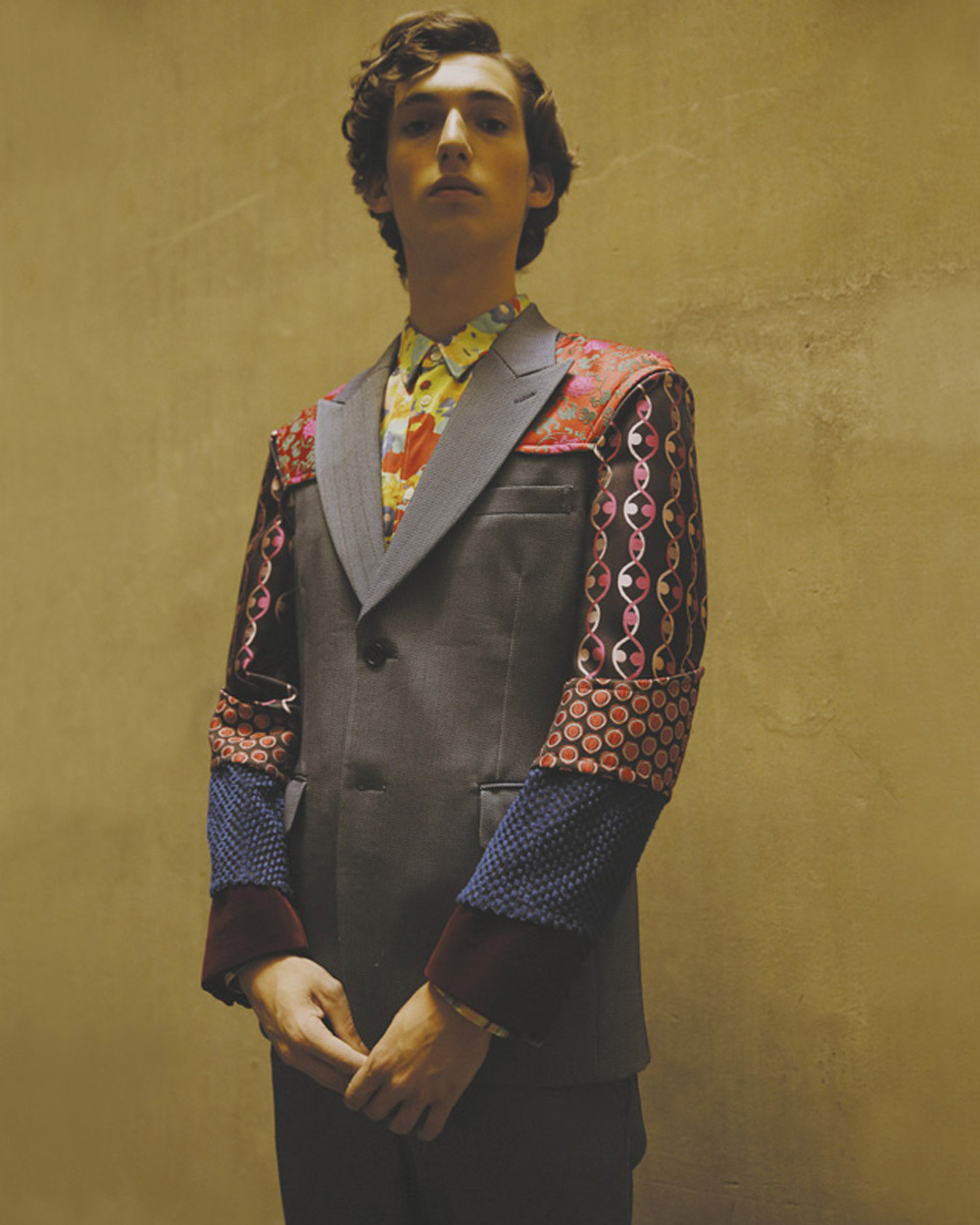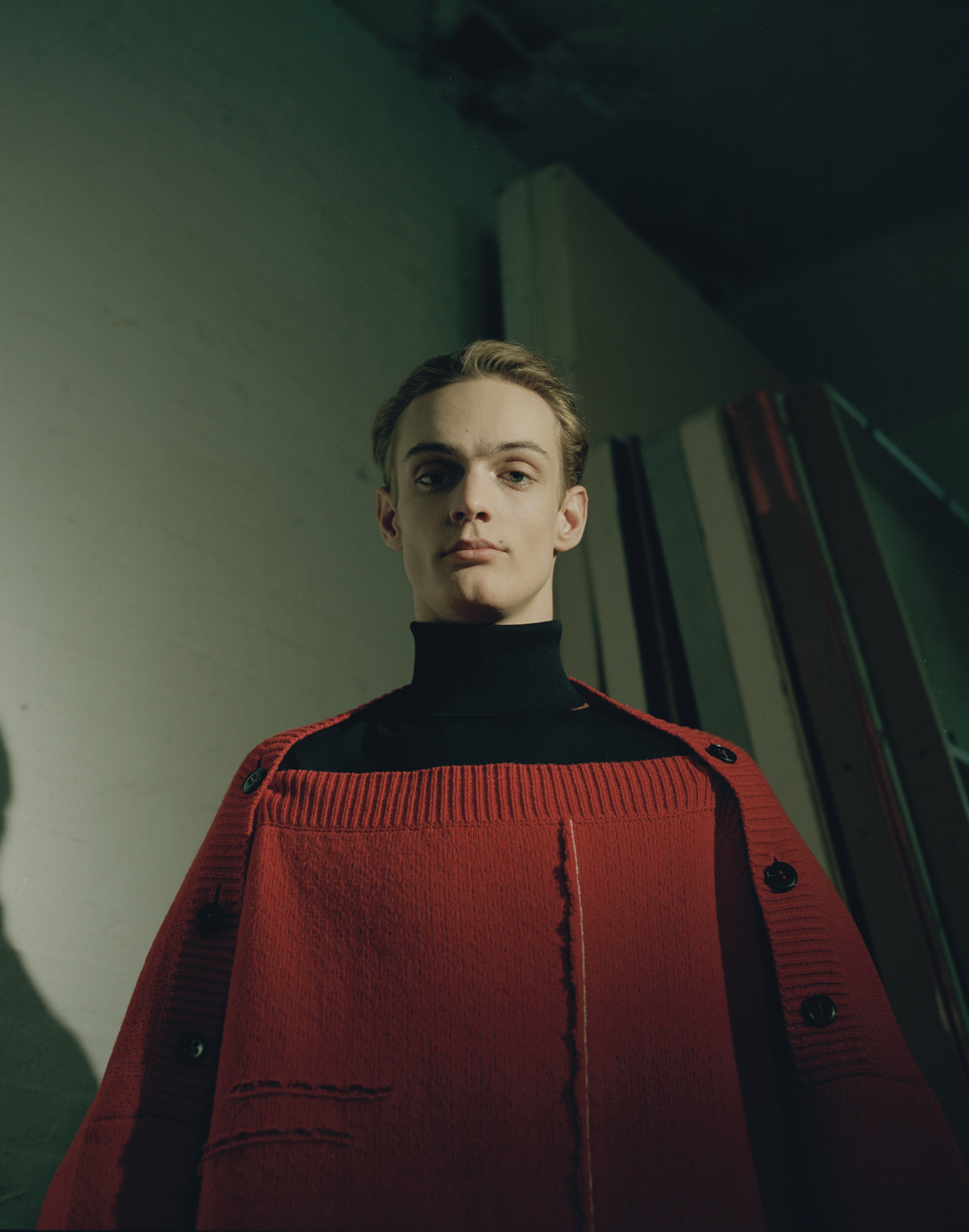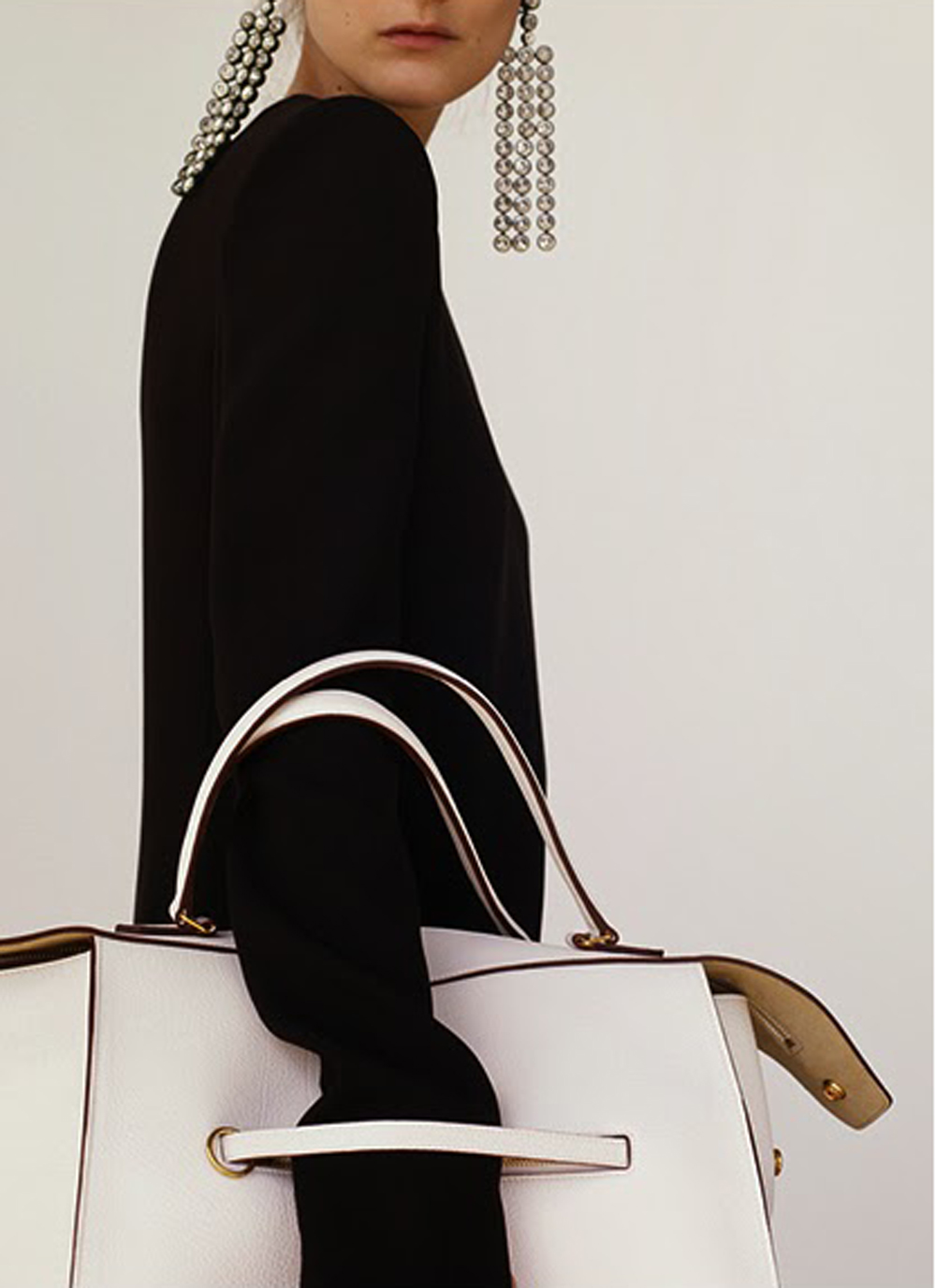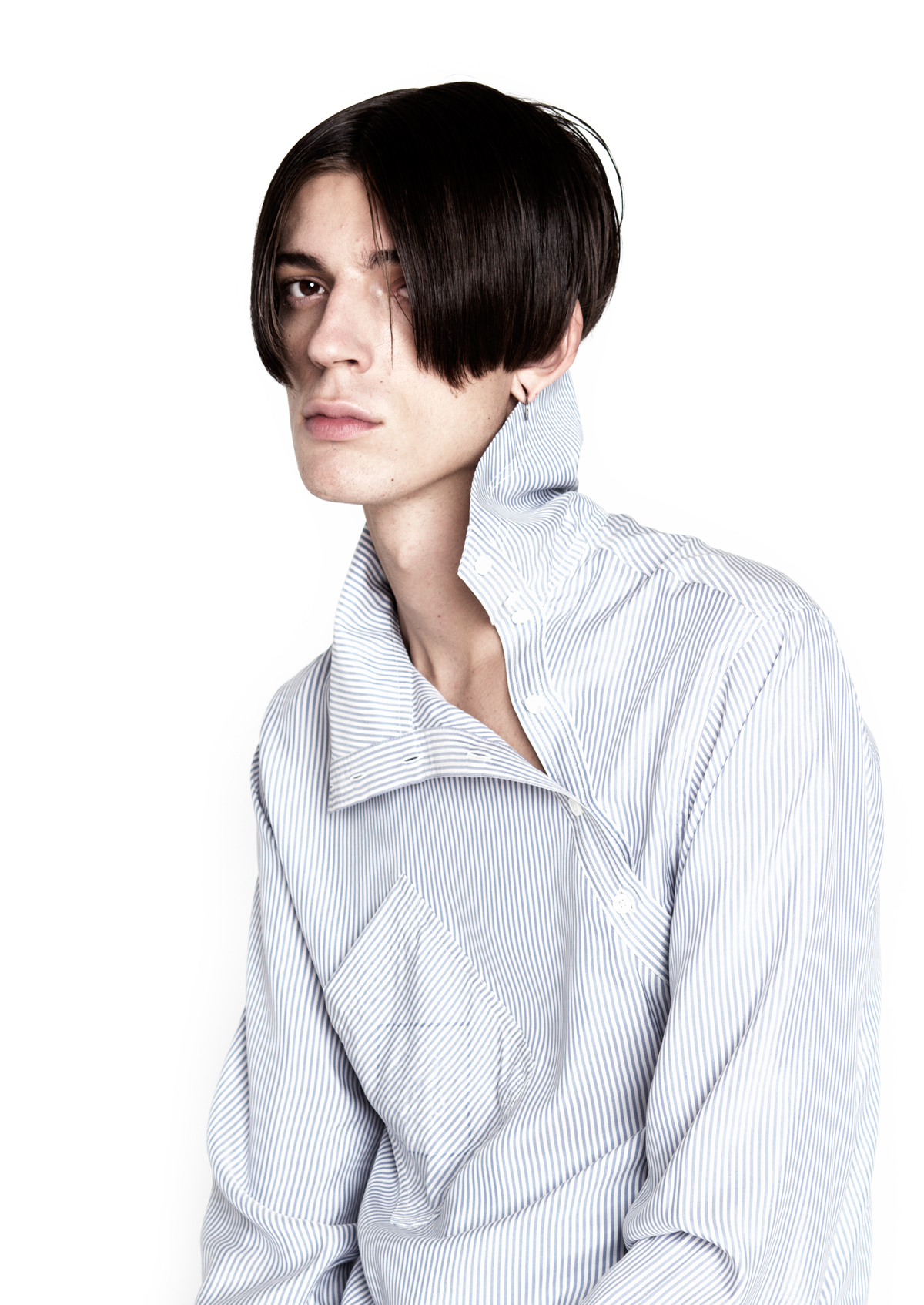A Man of
the Times
by Lesley Chee
"Perhaps what needs to happen is a championing of shared values that have seem to have fallen on the wayside of late—awareness, openness, honesty, respect—values that should not only be impressed upon men, but mankind."
We live in a time of change. That much is apparent, and fashion has always been a
reflection of the times we live in. What are we to make, then, of designers sending
men down the runways in a deluge of ruffles, satin, and lace, with pussybows and
floppy fringes and pastel? It seems we have become somewhat desensitised to
these visions, but the question remains—what is the real message here?
Yes, the debate on challenging gender stereotypes has long been waged. It never
ends, really; at times it quietens for a moment or so before it finds fuel for
resurgence, like Boy George’s kohl-lined eyes and perfect pout in the ’80s, or
Alessandro Michele’s vision for Gucci since 2015. But perhaps it’s no longer about
making a statement but a shifting cultural direction—one that goes beyond just
clothes, and which, foreseeably, has a much deeper impact.
2017 was a rough year for men. ‘Rough’ is probably making light of all the
Weinsteins, Spaceys, and Nassars, but suddenly, all the qualities we have
traditionally ascribed to men being in control, strong, and powerful—even
charming—have been designated as traits to watch out for in the workplace or
behind the scenes of a movie set. A flirtatious comment or a hand on someone’s
shoulder? Be warned.
But go the other way—as Facebook COO Sheryl Sandberg warns—and isolate or
ignore women in the workplace for fear of being wrongly accused, and you’re
obstructing workplace equality. “Whether that means you take all your direct reports
out to dinner or none of them, the key is to give men and women equal opportunities
to succeed,” she says. “Doing right by women in the workplace does not just mean
treating them with respect.” To Sandberg, that means creating a more inclusive
environment instead of leaving women out of key meetings and conversations. While
the actions of men come under increased scrutiny, with new scandals being revealed
on what seems like a regular basis, inaction is also being flagged. For Sandberg,
preventing access is almost as damning as sexual harassment.
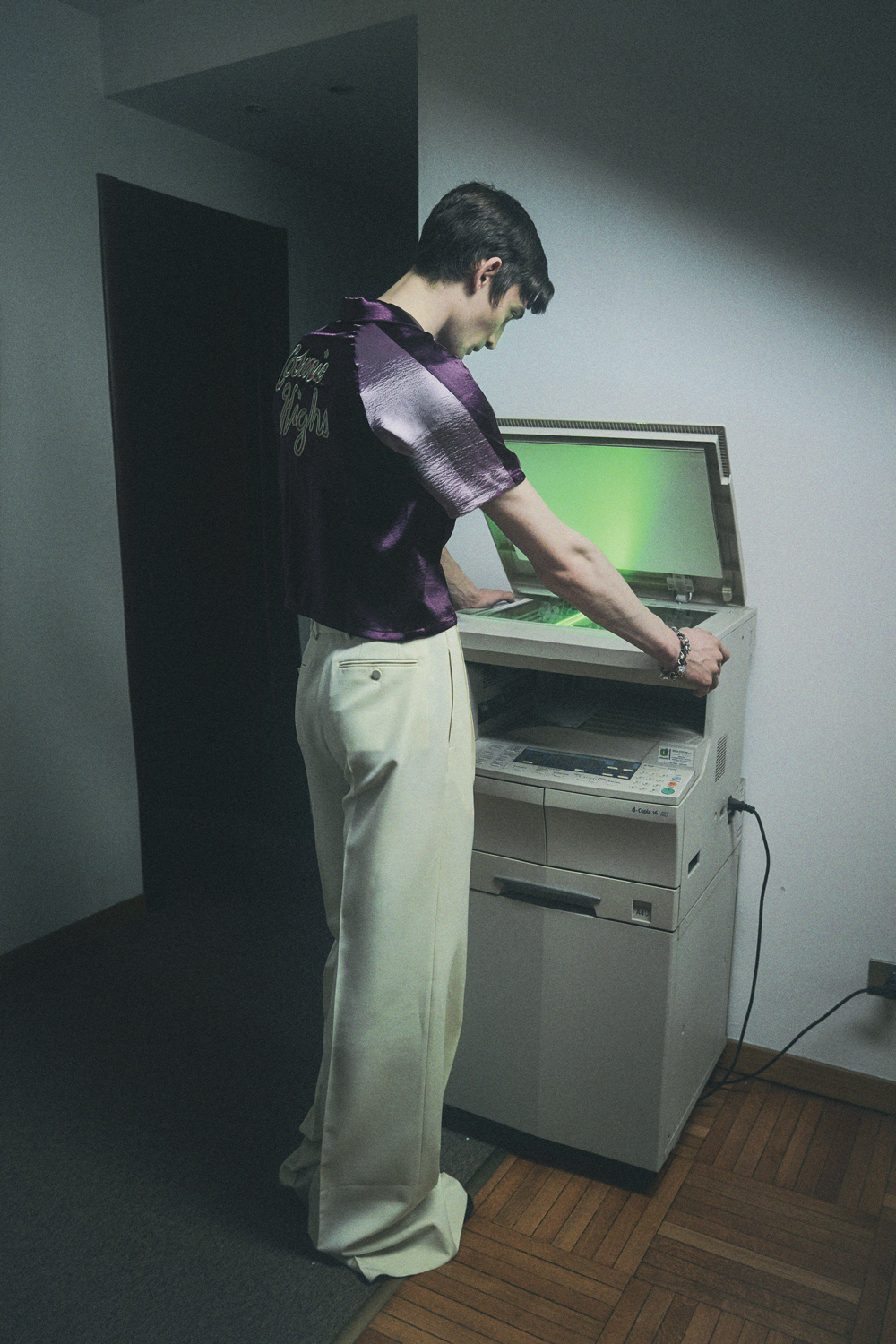
Above: top OBEY pants & bracelet GUCCI
Then there is Trump. Alexander Fury, fashion critic and editor of AnOther, posits that
the current flamboyance in men’s fashion is a reaction to the present overarching
mood of political conservatism—Trump, for one, then Brexit. “Perhaps it’s because
men in suits are now the bad guys,” he says. Refer, also, to Robin Givhan’s piece for
the Washington Post that detailed former FBI director James Comey’s hearing as
“Washington’s great fashion show of 2017”, describing the man himself as “the
consummate G-man in his black suit and pristine white shirt with its barrel cuffs and
point collar” matched with a “perfectly straight burgundy tie with its discreet
geometric pattern and rigorous dimple.” Polished, poised, pure—and right in the
centre of political turmoil, and then Brexit.
For those who identify traditionally as men this must seem like a minefield to
manoeuvre. Can’t dress like a man, can’t act like a man—everything they have been
taught to do by the very society that now questions them. Social cues and dress
codes that have been ingrained since the day they were told to choose trains over
tiaras are now being re-examined, for all the best intentions, but here men find their
identities being challenged. Of course, there has been some pushback—like
Catherine Deneuve and other French women who challenged the #MeToo
movement—but there is an overwhelming sense that things have changed, and will
continue to change. What’s a guy to do?
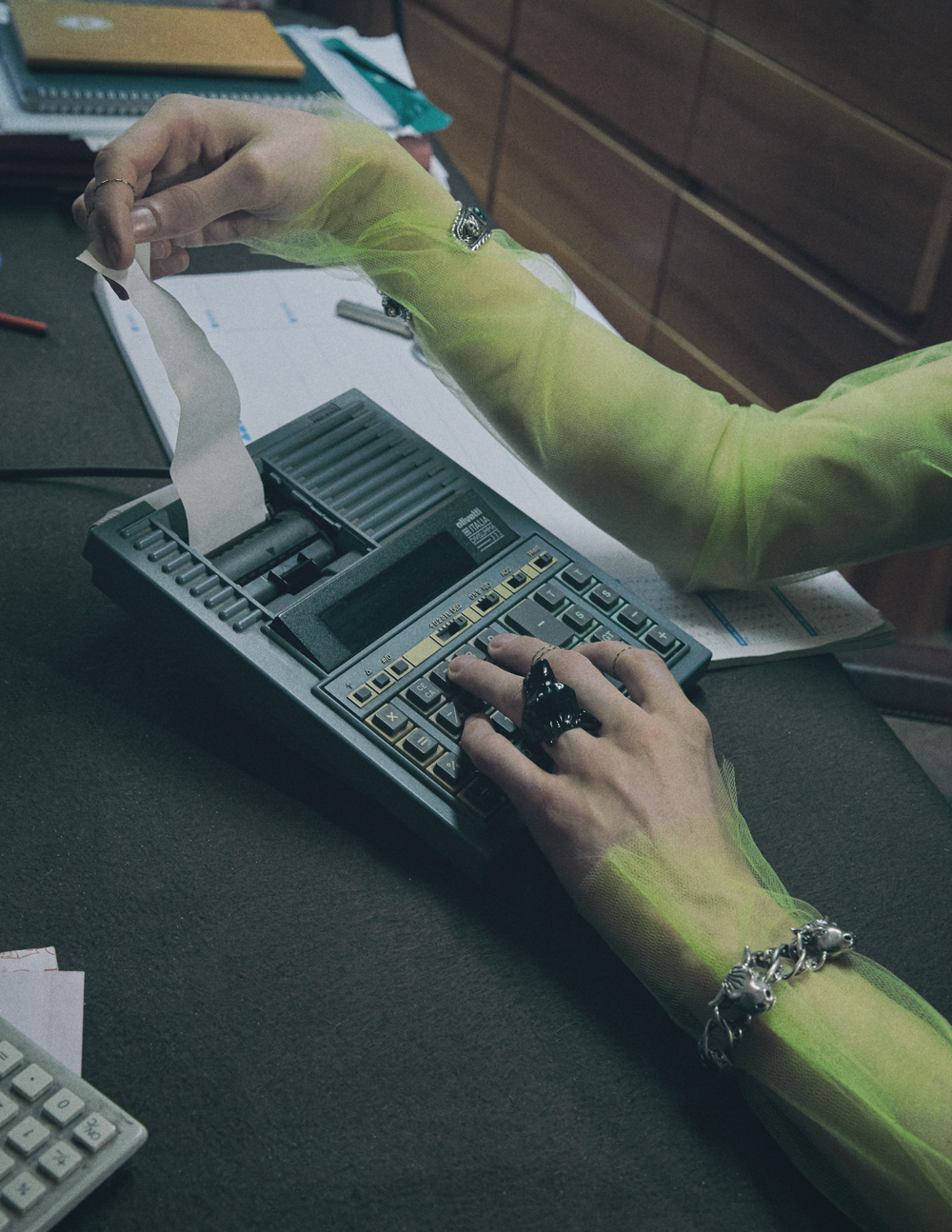

jacket GUCCI shirt PAUL SMITH stripe top LUCIO VANOTTI earring X TE
All this means that men must now attempt what appears to be a great balancing act. Not to attempt a Jaden Smith, but (re)introduce a feminine aspect into menswear. If Michele’s version of a man is taking things too far, then look towards more subtle manifestations, such as those of Grace Wales Bonner—whose ode to Senegalese street-style and traditional British tailoring presented a new vision for menswear; all shrunken jackets, nipped-in waists, and exposed ankles, which appealed to men and women alike. Or Chitose Abe’s restructuring of socially-enforced clothing codes in her Spring 2018 collection for Sacai. She wasn’t the first designer to send both men and women down the runway in a menswear show—Demna Gvasalia, Craig Green, and Hedi Slimane are just a few who have done the same—but Abe’s declaration (“One should live the way one wants!”) goes beyond a business tactic or a publicity stunt. A similar look was presented for him: a flowing, buttoned-up jacket with checks of emerald velvet, worn over a skirt for example, and for her: a short-sleeved, knee-length, oversized drawstring dress of the same material—but, as she says, you’re free to choose whichever look you’re drawn to, gender be damned.
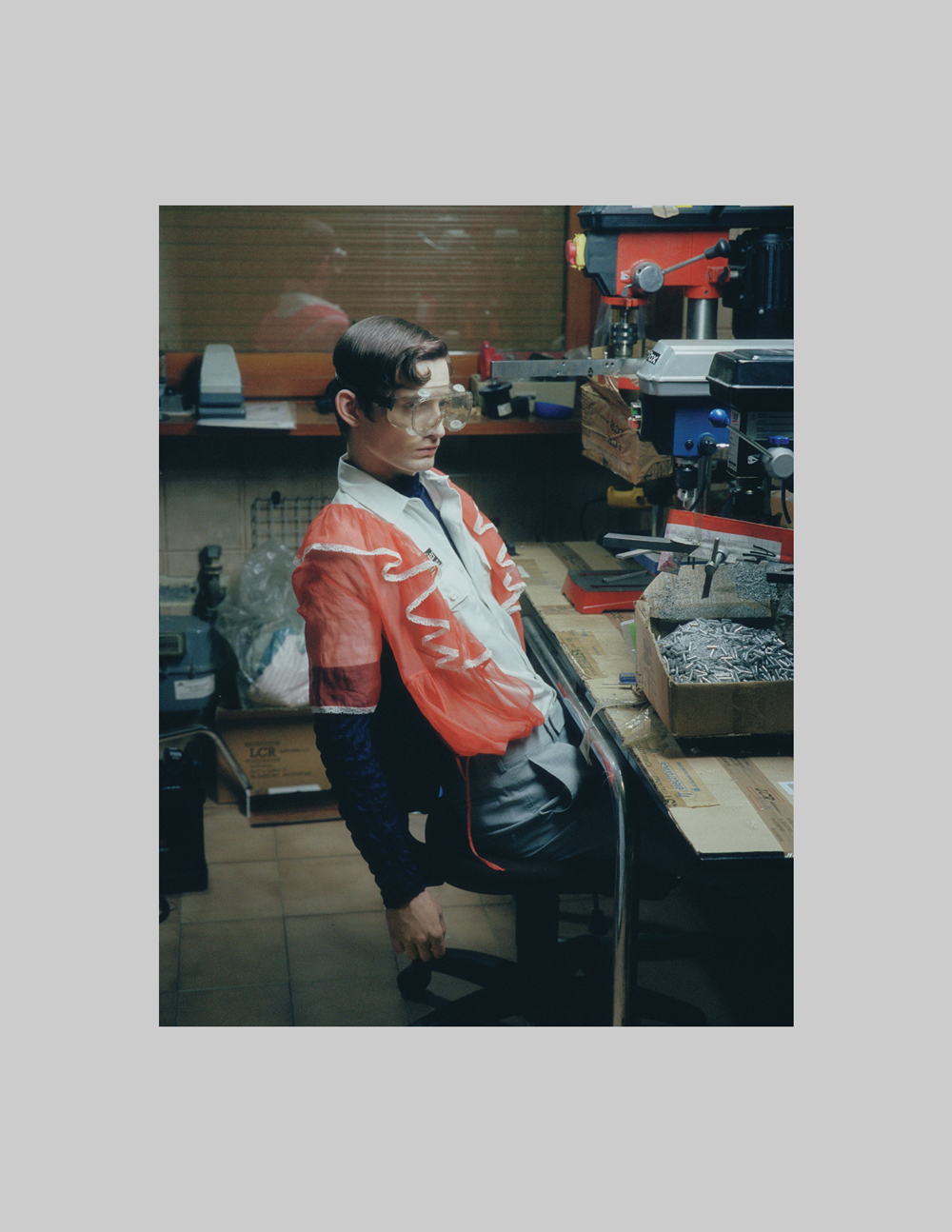
blue top ISSEY MIYAKE white shirt OBEY long blouse MELAMPO pants PAUL SMITH
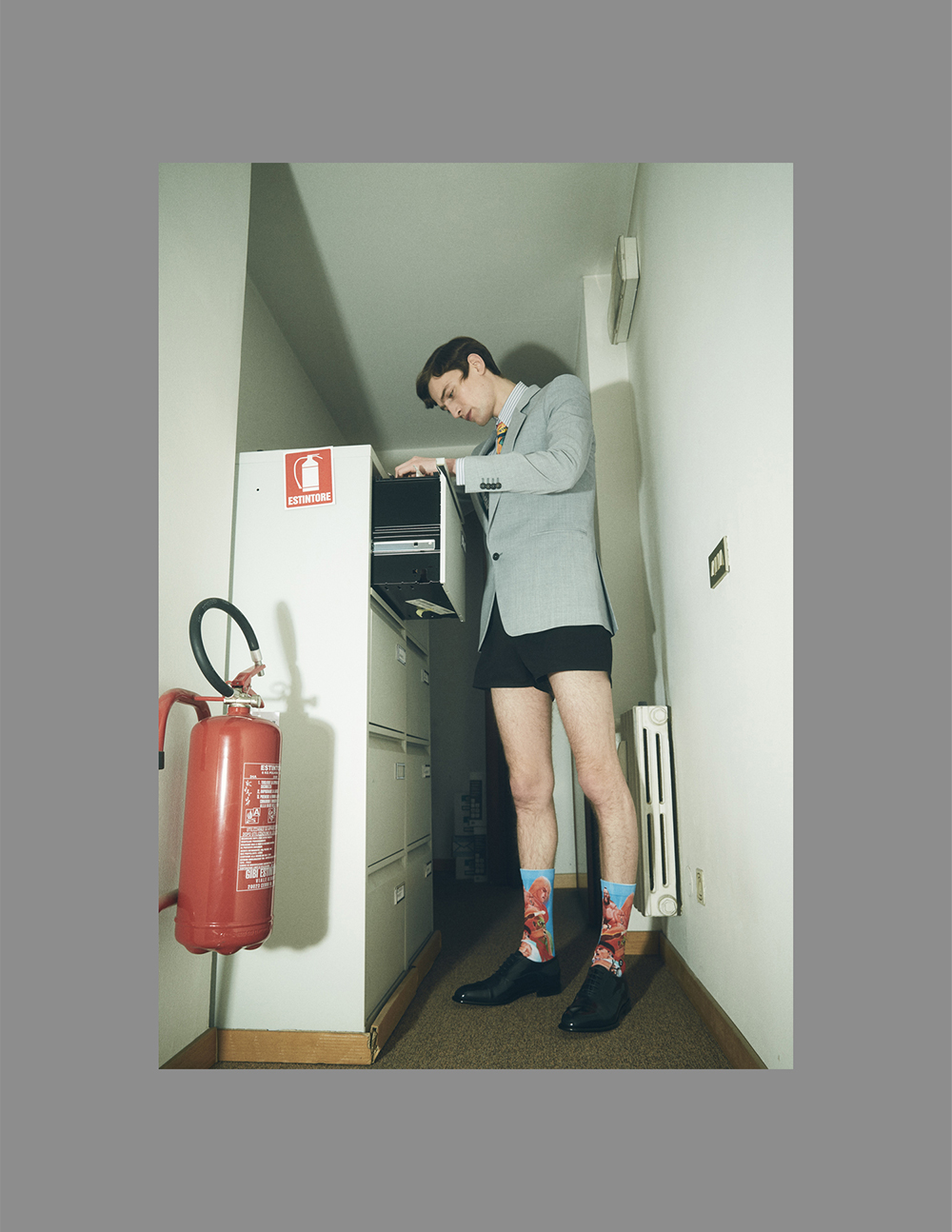
jacket & tie PAUL SMITH shirt & shorts PRADA socks STANCE shoes FABI
This is done not purely for fashion’s sake, but, as seen above, as a reflection of the times. The way we choose to dress—or the manner of dress that is, for the time being, commonly accepted by society—has always been a signifier of much bigger social, cultural, and even political issues. Consider, for example, Gabrielle ‘Coco’ Chanel’s revolutionary take on women’s fashion all the way back in the 1920s: drawing inspiration from sailor suits, her liberal use of jersey freed women from the constraints of the corset, reflecting a major upheaval of a woman’s role in the home, workplace, and politics. And, as is the case today, fashion for a New Age mirrors a call for an exploration of a manhood that is more tender, spiritual, and liberal. Beyond the now-popular notions of androgyny, metrosexuality, and the like, designers—and society at large—are challenging the more deep-seated, ingrained characteristics of what manliness is all about. It’s time to stop pigeonholing traditional ideas of masculinity, but we must also bear in mind that by declaring what men “should be”—sensitive, emotionally vulnerable, tender, etc—that we are once again defining personality traits that, as time has proven, are indeterminate.

Above: jacket ANDREA POMPILIO tie PAUL SMITH earring X TE shirt STYLIST'S OWN
Perhaps what needs to happen is a championing of shared values that have seem to have fallen on the wayside of late—awareness, openness, honesty, respect—values that should not only be impressed upon men, but mankind. With all the chaos and upheaval in the world, there also seems to have come a shift towards a more introspective, contemplative climate, and while the spotlight seems to have temporarily been cast on the men, there is no time like the present to deeply consider what defines us as not only men and women, but as humanity.
Photography by Riccardo Dubitante | Styling by Noey Park
